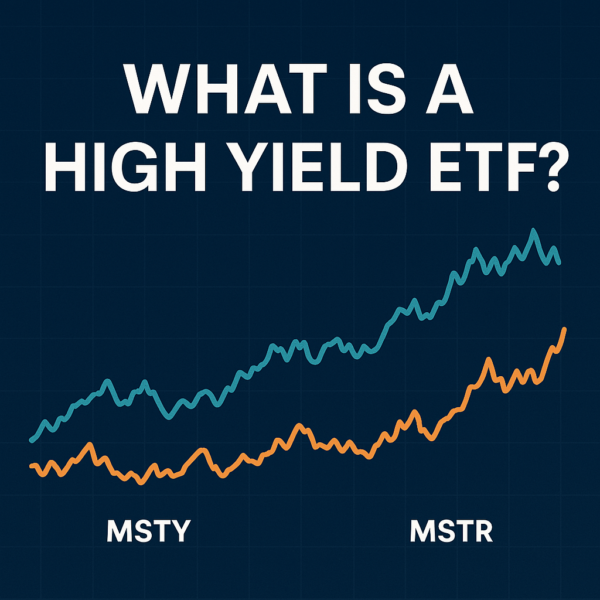What Is the Best ETF for Long-Term Growth in 2022?
If you want to build wealth, investing in a basket of top-tier stocks is the best way to do so. But, investing in each stock individually can be costly. Not to mention deciding how much to allocate to each investment. Luckily, you can get all this by investing in the best ETF for long-term growth.
Exchange-Traded Funds (ETFs) are an excellent way to invest in a diverse group of top-performing stocks. Moreover, they can help cushion the blow when economic downturns arrive.
For example, if you invested in just one of the FAANG stocks, your portfolio could be hurting this year.
- Facebook/ Meta (Nasdaq: FB): -36%
- Amazon (Nasdaq: AMZN): -26%
- Apple (Nasdaq: AAPL): – 11%
- Netflix (Nasdaq: NFLX): -66%
- Google (Nasdaq: GOOGL): -20%
Meanwhile, the best ETF for long-term growth of the past decade, the S&P 500 ETF Trust (NYSE: SPY), is down only 11% so far in 2022.
With many top growth stocks down significantly from their ATHs, now may be the time to consider the best ETF for long-term growth.

What to Look for
ETFs offer something for everyone from specific sectors to EV battery stocks and even dividends. In fact, there are over 8,500 ETFs globally, all offering a unique way of investing. With so many ETFs to choose from, where do you start?
But when deciding which ETF is best for you, there are a few factors to consider.
- Holdings: Of course, the assets in the ETF are going to be one of the first factors to look at. Do you want to focus on a specific area (tech, energy, etc.)? Or would you rather take advantage of overall market growth?
- Weight: The weight of each holding varies by ETF. Some funds will aggressively invest in the top few holdings. Others are more balanced.
- Dividend: Does it pay a portion to holders? And if so, how much?
- Market Cap: Do you want to focus only on mega-cap companies like Apple and Microsoft (Nasdaq: MSFT), or would you rather a blend?
- Expense Ratio: ETFs will often charge a fee to manage the fund. Not all ETFs have a fee, but it can vary depending on how active management is.
- Past Performance: An ETFs past performance does not predict how it will do in the future. But it can help you decide how effective management is and give you clues for what you can expect.
- Your Goals: Last but not least, recognizing your goals and what you want out of an ETF will influence your decision.
If you are unsure of where to start, that’s okay too. ETFs are simple to begin with, making them great options for beginners and experts alike.
What Is the Best ETF for Long-Term Growth Right Now?
As uncertainty rolls through the market, investors are selling growth stocks for value. Yet ETFs offer the best of both worlds, value and growth.
To find the best ETF for long-term growth for you, below you will find a breakdown of some of the top-performing funds to help you start.
- SPDR S&P 500 ETF Trust (SPY): The first ETF in the U.S. is also the largest by market cap. The SPY ETF seeks to track the S&P 500 Index, with diverse large-cap holdings. Top holdings include Apple, Microsoft, Amazon, Tesla and Alphabet.
- Invesco QQQ Trust (QQQ): The QQQ ETF tracks the Nasdaq-100 Index with 100 of the largest global firms. The top holdings include Apple, Microsoft, Amazon, Tesla and Nvidia.
- SPDR Dow Jones Industrial Average ETF Trust (DIA): Seeking to track the DJIA, the ETF holds 30 U.S blue chips stocks. The top holdings include UnitedHealth, Goldman Sachs and Home Depot.
So far, the DIA ETF is outperforming its peers, down 8% in 2022 compared to the QQQ, down 20%, and SPY down 12%. But, if you zoom out five years, QQQ leads the pack up 140%, while SPY is up 90%, and DIA is up 76%.
As can be seen, QQQ is a higher risk, higher reward with bigger long-term gains and more significant losses. On the other hand, the Dow Jones is less risk, less reward, gaining slightly and protecting returns.
If you are looking for higher returns in the long run, QQQ may be the way to go. Otherwise, the DIA may be a better choice if you want to protect your returns. So, you can see why your goals are an important part of your decision for the best ETF for long-term growth.
Other Top ETFs for Growth
For the more aggressive investors, there are ETF options for you too. For example, you can take advantage of trends and economic events by investing in the right funds.
High Dividend ETF: iShares Select Dividend ETF (DVY)
Clean Energy ETF: Invesco Solar ETF (TAN)
Gold ETF: SPDR Gold Shares (GLD)
Oil ETF: United States Oil Fund (USO)
Electric Vehicle ETF: Global X Lithium & Battery Tech ETF (LIT)
Real Estate ETF: Vanguard Real Estate ETF (VNQ)
Aggressive Growth ETF: iShares Russell 1000 Growth ETF (VUG)
Semiconductor ETF: iShares Semiconductor ETF (SOXX)
International ETF: Schwab International Equity ETF (SCHF)
If you have a long-term conviction in any of these trends, one of the above may be the best ETF for long-term growth for your portfolio.
Why Invest in ETFs for Growth?
Investing in ETFs is not for everyone. But if you want to earn passive income, parking your money in an ETF is a good bet.
Here’s why… ETFs give exposure to several brands across many sectors for the long-term investor. By diversifying your investments, you can help reduce the chances of your account blowing up while earning a return in the long run.
The best ETF for long-term growth could be the SPY, QQQ or DIA. But, the most important thing to remember is the longer your money is in the market, the better chance you have of earning a return.
Studies show how long you invest is more important than trying to time the market. If you are investing for the long run, these are some of the best ETFs in 2022 for long-term growth.





